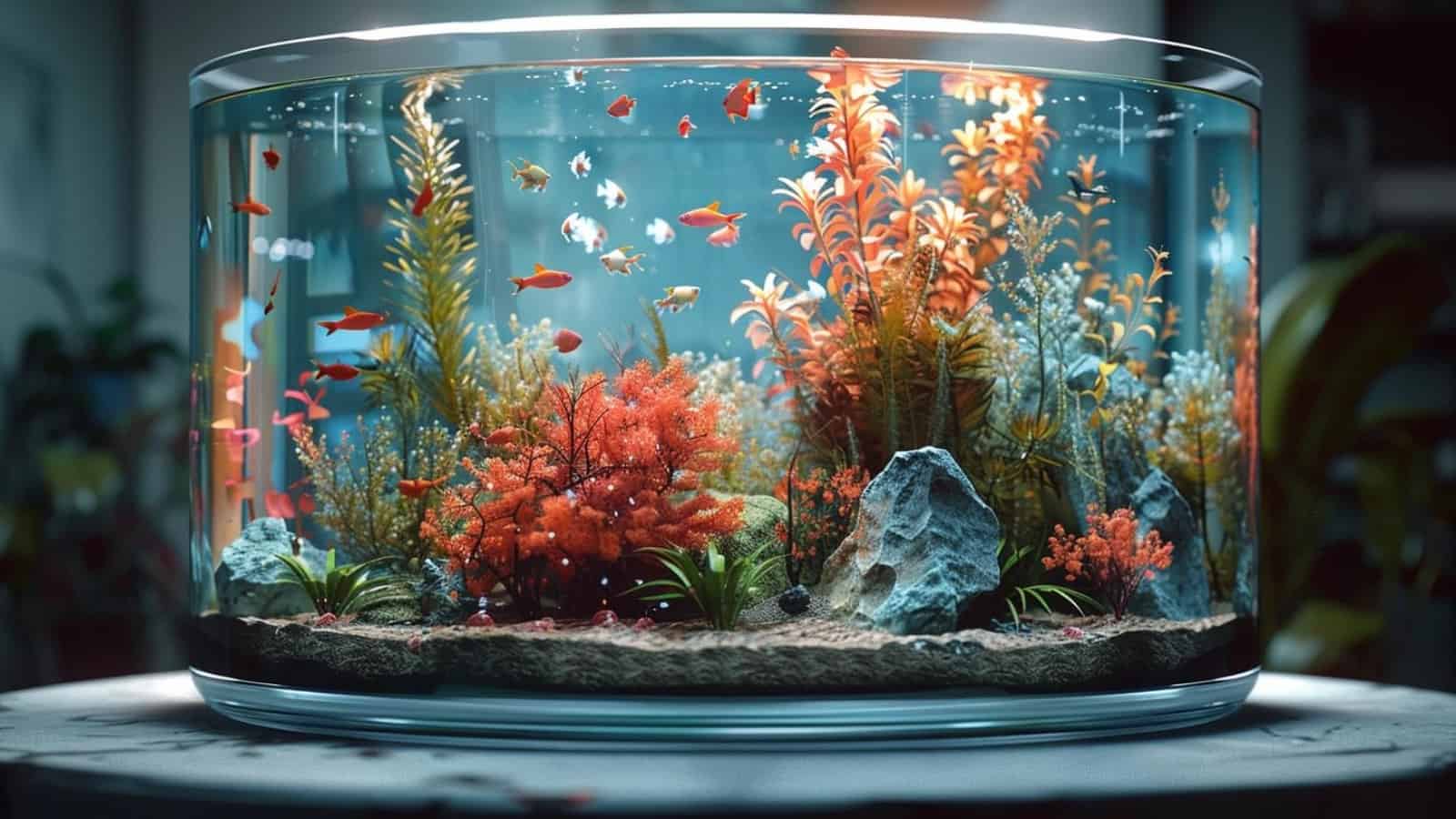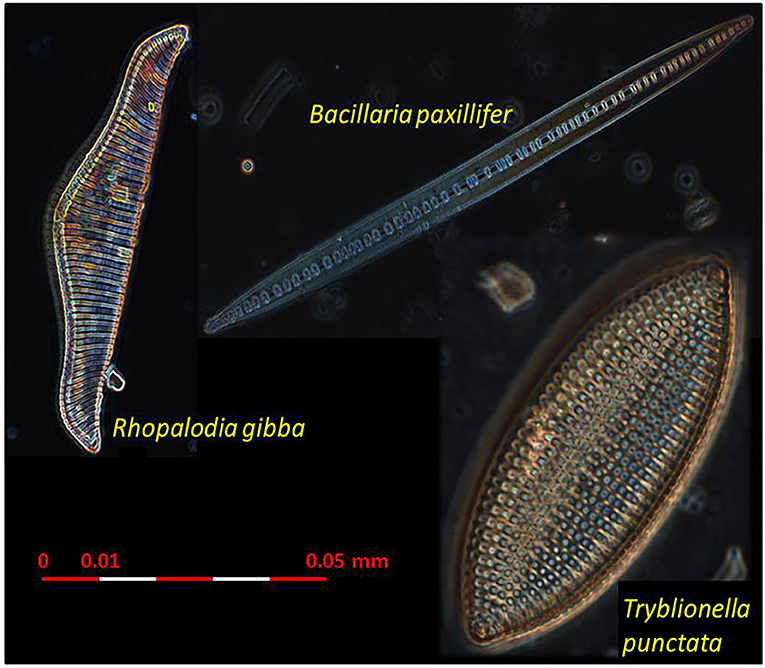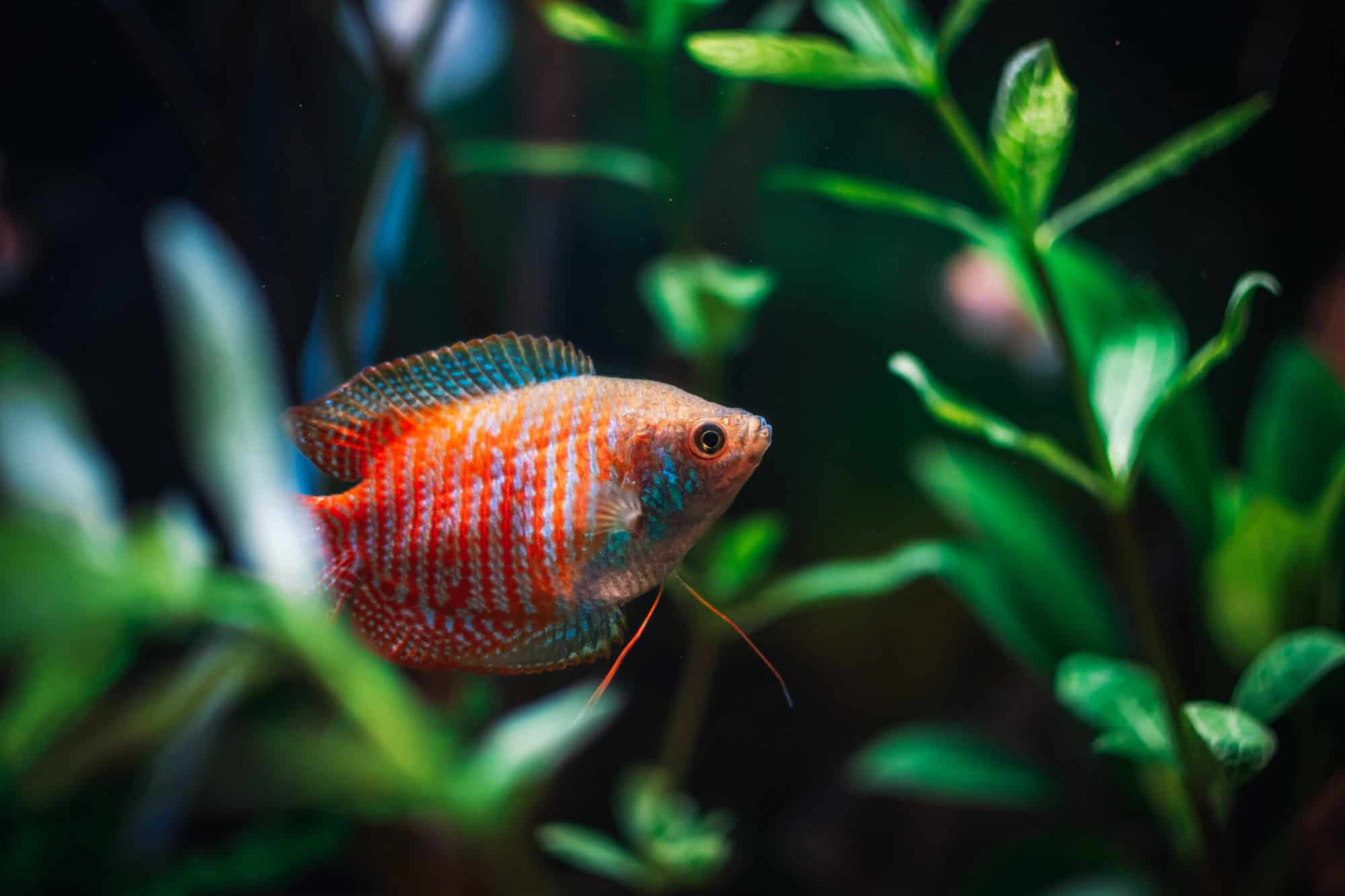If you are looking for a scooting fish then you will enjoy learning about the Scooter Blenny! This guy adds a dynamic aspect to the underwater world, captivating the hearts of many aquarists with their amusing behavior and striking appearance.
The Scooter Blenny might not have a very long lifespan but makes up for it with its peaceful personality and interesting scooping behavior.
This blenny is among our favorites because it is a small dragonet that requires some moderate care and can breed in captivity if you are willing to put in the work. Moreover, its compatibility with many other good looking fish (covered under tank mates) will make your saltwater aquarium look like a fish paradise. So, without further ado, let’s dive in!
| Scientific Name: | Synchiropus ocellatus |
| Other Names / Common Species: | Scooter blenny, Scooter dragonet, Ocellated dragonet, Red scooter dragonet, Red scooter blenny, Starry dragonet, Stellate dragonet |
| Reef Safe: | Yes |
| Lifespan: | 2 years, sometimes 4 |
| Size: | 3-5 inches |
| Care Level: | Intermidate |
| Diet: | Carnivore; Live Copepods, Frozen or Dried Zooplankton. |
| Water Parameters: | 72-78 F, 8.1-8.4 pH, 8-12 dKH, 1.020-1.025 SG |
| Tank Size: | 30 gallons |
| Behavior: | Paceful |
| Breeding: | Low to Medium difficulty |
If you are looking for a scooting fish then you will enjoy learning about the Scooter Blenny! This guy adds a dynamic aspect to the underwater world, captivating the hearts of many aquarists with their amusing behavior and striking appearance.
The Scooter Blenny might not have a very long lifespan but makes up for it with its peaceful personality and interesting scooping behavior.
This blenny is among our favorites because it is a small dragonet that requires some moderate care and can breed in captivity if you are willing to put in the work. Moreover, its compatibility with many other good looking fish (covered under tank mates) will make your saltwater aquarium look like a fish paradise. So, without further ado, let’s dive in!
Species Summary
Ah, the Scooter Blenny, a delightful little character of the marine world! Known scientifically as Synchiropus ocellatus and also as Ocellated Dragonet, is part of the Dragonet family and has garnered a reputation in the saltwater aquarium community for its unique charm and intriguing behavior.
A bit of a misnomer, the Scooter Blenny is not part of the Blenny family (a better name would’ve been Scooter Fish).
The Scooter Blenny is a favorite among saltwater tank enthusiasts who appreciate its quirky personality and fascinating appearance.
Where does the name come from? The scooter blenny is constantly “scooting” the sand beds, so now you know!
Originating from the Indo-Pacific Ocean, the Scooter Blenny is typically found meandering around coral-rich areas and sandy bottoms. These captivating creatures are mostly seen at depths ranging from shallow waters to about 90 feet deep.
Author Note: Their ability to blend into their surroundings not only makes them excellent at playing hide and seek but also signifies their adaptability to various environments within the reef ecosystem.
In home aquariums, they bring a piece of the ocean’s mystery, coupled with an entertaining display of natural behavior, making them a beloved addition to any reef-compatible setup.
Appearance
The Scooter Blenny, a small but visually arresting saltwater fish, boasts a fascinating array of physical characteristics that set it apart in the marine aquarium world.
The most striking feature of these blennies is their intricate, mottled pattern. Shades of brown, tan, and rust intermingle across their body, interspersed with occasional spots and dashes of brighter colors, creating a mesmerizing, almost kaleidoscopic effect.
In comparison to similar species, like the closely related Dragonets, the Scooter Blenny is often leaner and more streamlined. Their coloration is more subdued and earthy than the vivid, often flamboyant hues of Dragonets. However, it’s their pectoral fins that really set them apart; they are larger and more wing-like, aiding in their distinctive ‘scooting’ movement across the substrate, a trait that gives them their common name.
Male Scooter Blenny & Red Scooter Blenny
The male Scooter Blennies, especially when in the breeding season, display brighter and more pronounced coloration, a common trait seen in many fish species. Their small, expressive eyes and pointed snouts add to their curious and engaging appearance. Notably, the red scooter blenny variant offers a deeper, more intense color palette, making it a sought-after variety for its striking presence in a saltwater tank.
How about the female Scooter Blenny?
Determining the sex while young is a bit difficult but you will be able to tell when they mature because the female’s dorsal fin is quite smaller.
Author Note: Their unique look isn’t just for show; it plays a crucial role in their survival in the wild, providing camouflage against predators and helping them blend into the sandy bottoms and coral reefs they inhabit.
Lifespan
In the world of saltwater aquariums, this blenny is known for its relatively moderate lifespan. The captivating Scooter Blenny has an average lifespan of about 2 to 4 years in captivity, though some may exceed this range with optimal care. In the wild, their lifespan can be slightly longer, thanks to the vast, natural environment that caters to their innate needs.
Several factors play a crucial role in determining the lifespan of a Scooter Blenny in a home aquarium, including:
- Stable water parameters
- Cleanliness
- A suitable diet
- Stress levels
Average Size
This charming inhabitant of many saltwater tanks, typically reaches a modest size in adulthood. Generally, Scooter Blennies grow to an average size of about 3 to 5 inches long. This size range makes them a manageable and appealing choice for a variety of tank sizes, particularly for those who enjoy the intricate ecosystems of smaller reef tanks.
How important is the tank?
The tank’s ecosystem, including the presence of live rock and ample hiding spaces, contribute to their overall growth and wellbeing. An appropriate tank set-up allows them to reach their full size potential in a nurturing environment.
Scooter Blenny Care
Caring for a Scooter Blenny is not super demanding but it does require some effort. Let’s dive into the specific care requirements to ensure your Scooter Blenny not only survives but thrives in its aquatic home.
Tank Size
When it comes to setting up the perfect home for a Scooter Blenny, the minimum recommended tank size is 30 gallons. This space is essential not just for their physical well-being but also for their mental health. In a smaller tank, Scooter Blennies may become stressed due to the lack of space to explore and carry out their natural behaviors.
A larger tank of about 50 gallons allows for more stable water parameters (and can fit 1 male and 2 females), which is crucial for maintaining the health of a Scooter Blenny. It also provides ample room for live rock and sand, essential for their natural foraging behavior. Hey, who doesn’t like mansions?
Water Parameters
Maintaining the right water parameters is crucial for the health and happiness of a Scooter Blenny. These specific ranges closely mimic their natural ocean habitat, ensuring they thrive in your saltwater tank:
| Parameter | Range | Why is this important? |
| Water temperature | 72-78°F (22-25.5°C) | This range is ideal for replicating the warm waters of their natural environment, promoting healthy metabolism and overall fish health. |
| pH levels | 8.1-8.4. | This slightly alkaline range is vital for their physiological processes and aids in maintaining robust immunity. |
| Water hardness | 8-12 dKH | Keeping the water hardness within this range helps in regulating the fish’s internal osmotic processes. |
| Specific gravity | 1.020-1.025 | This salinity level is essential for mimicking the oceanic conditions where Scooter Blennies are found, affecting their hydration and overall health. |

Tank Setup
Creating a hospitable environment for a Scooter Blenny in your tank involves more than just the right water parameters. Their ideal habitat includes:
- Substrate: A sandy bottom is essential, as it closely resembles their natural habitat and supports their foraging behavior.
- Lighting: Moderate lighting reflects their natural living conditions and helps maintain a healthy ecosystem within the tank, especially for live rock and corals.
- Filtration: Efficient filtration is key to keeping the water clean and maintaining stable water parameters. However, strong currents should be avoided as Scooter Blennies prefer calmer waters.
- Aquascaping: Incorporating plenty of live rock and crevices offers them places to hide, explore, and forage, just like in their natural reef habitat. This not only makes them feel secure but also encourages natural behaviors.
This tailored environment ensures that your Scooter Blenny not only survives in your saltwater tank but thrives, displaying its natural behaviors and living a stress-free life.
Is the Scooter Blenny Reef Safe?
When it comes to integrating a Scooter Blenny into a reef tank, there’s good news for reef enthusiasts. Scooter Blennies are generally considered reef safe, as they typically do not harm corals or other invertebrates.
Warning Coming! However, there are nuances to their behavior that are worth noting, especially when distinguishing between juveniles and adults.
Juvenile Scooter Blennies tend to be more curious and may lightly peck at corals, but this behavior is usually non-destructive and driven by their foraging nature.
As they mature, they typically lose interest in corals and become more focused on microfauna present in the substrate.
Food & Diet
The Scooter Blenny enjoys a carnivorous diet which plays a pivotal role in its overall health, coloration, and vitality. These saltwater fish have specific dietary needs that, when met, can enhance their well-being and even the vibrancy of their colors.
Feeding Schedule:
- SNACKING! Scooter Blennies thrive on frequent feedings. Small, multiple feedings per day are ideal, as they are continuous foragers in the wild. This mimics their natural eating habits and keeps them healthy.
Types of Food and Benefits:
- Live Copepods: These are the primary food source for Scooter Blennies. Copepods provide essential nutrients and help maintain their natural foraging behavior.
- Frozen or Dried Zooplankton: While live food is preferable, these can be a good supplement, especially in well-established tanks with a stable microfauna population.
- Algae: Including some algae in their diet can be beneficial, as it’s a natural part of their ecosystem.
Caution Note: Overfeeding can lead to water quality issues, so it’s important to balance their diet with the overall health of your tank. Monitor their response to different foods and adjust their diet accordingly.
Scooter Blenny Tank Mates & Predators
Creating a harmonious tank environment for your Scooter Blenny involves careful selection of tank mates and awareness of potential predators.
Ideal Tank Mates:
- Small, Peaceful Fish: Scooter Blennies do well with similarly sized, non-aggressive fish. Examples include:
- Non-Predatory Invertebrates: They are generally safe with most reef invertebrates. Good companions include:
WHY ARE THESE TANK MATES A GOOD IDEA? (in case you are curious)
Because they share similar habitat preferences and do not pose a threat to the Scooter Blenny. The presence of peaceful fish and invertebrates can actually mimic their natural social environment, reducing stress and encouraging natural behaviors.
Predators and Protection:
- Larger, aggressive fish can pose a threat to Scooter Blennies. Predatory species to avoid include:
- SO, HOW CAN THEY BE PROTECTED?
- Ensure ample hiding spaces: Providing plenty of live rock and crevices allows Scooter Blennies to escape potential threats.
- Monitor feeding: Make sure your Blenny is getting its share of food, as larger fish might outcompete them.
Breeding
Breeding Scooter Blennies in a home aquarium can be a challenging yet rewarding experience. It requires close attention to their environment and behavior. Here’s a step-by-step guide to facilitate successful breeding:
- Sexual Maturity and Identification: Ensure your Blennies are sexually mature, which typically occurs around 6 to 12 months of age. Males often display brighter colors and are slightly larger.
- Creating the Right Environment: Simulate natural breeding conditions by maintaining stable water parameters and providing a peaceful environment. Including plenty of live rock for hiding and spawning is crucial.
- Observing Courtship: Watch for courtship behaviors, which include males performing a dance to attract females and showing off their brightest colors.
- Spawning: If successful, the female will lay eggs in a secure spot, usually on the underside of a rock or in a crevice.
- Parental Behavior: Post-spawning, males typically guard the eggs, fanning and cleaning them to prevent fungus and promote oxygenation.
- Fry Care: Once the eggs hatch (usually 12 to 16 hours later), the fry are extremely small and need tiny food sources like rotifers or baby brine shrimp. This stage is critical and requires daily monitoring.
What is the biggest challenge? Raising the fry due to their size and vulnerability. Providing them with an abundance of appropriate food and a safe, stable environment is key for survival. If you quarantined the fry (good idea) you can bring them back when they reach 1 inch.
Author Note: The Scooter Blenny is a bit of a romantic creature, with spawning happenning late in the evening during sunset.
It’s a Wrap
So, are you ready to get started? The Scooter Blenny is a nice saltwater fish to add as long as you are prepared to commit for a couple or more years.
While caring for these guys presents certain challenges, these are not insurmountable obstacles or in more common words, IT IS NOT ROCKET SCIENCE!. For the dedicated hobbyist, these requirements become part of the rewarding process of creating a thriving underwater habitat.
For beginners, the Scooter Blenny can be a bit of a stretch due to their specific needs, particularly their diet. However, for intermediate or expert aquarists looking to expand their knowledge and skills in marine care, these blennies can be an excellent choice.
If you’ve found the Scooter Blenny intriguing, you might also enjoy learning about the Mandarin Goby. If you have any questions don’t hesitate to reach out and don’t forget to tag us on Facebook when sharing cool photos of your blenny.
FAQs
Q: How can I differentiate between a male and female Scooter Blenny?
A: Male Scooter Blennies usually display brighter colors and are slightly larger than females. The males often become more vividly colored during the breeding season.
Q: Can I keep multiple Scooter Blennies in the same tank?
A: While it’s possible, caution is advised. Scooter Blennies can be territorial, especially in smaller tanks. A larger tank with plenty of hiding spots and ample resources can mitigate potential aggression.
Q: Is the Scooter Blenny a good choice for beginner aquarists?
A: Due to their specific dietary and environmental needs, Scooter Blennies are better suited for intermediate or expert aquarists rather than beginners.
Q: Can Scooter Blennies be bred in captivity?
A: Breeding Scooter Blennies in captivity is challenging and rare. It requires specific conditions and careful monitoring, making it more suitable for experienced aquarists.




